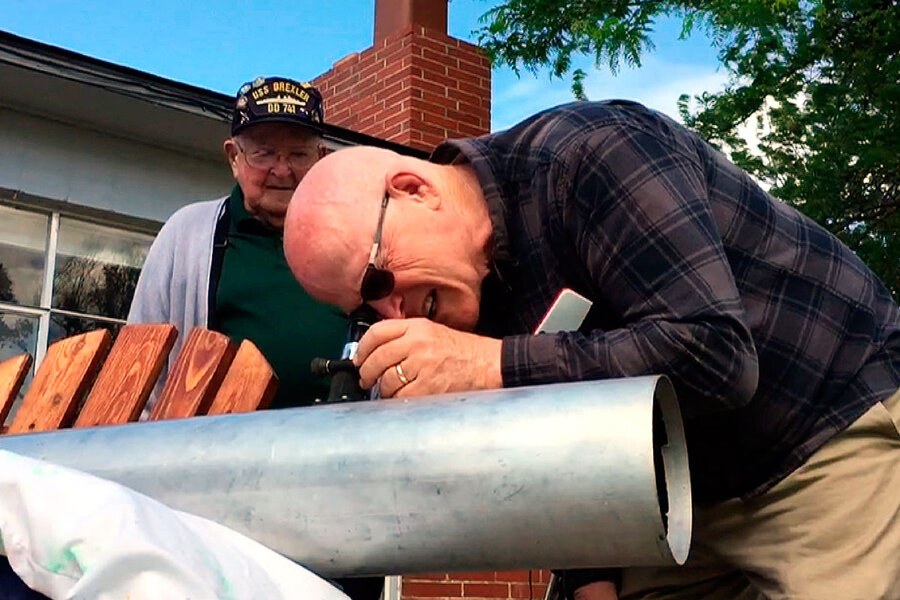How the Great American Eclipse will bring solar science to Earth
Loading...
On Aug. 21 the moon and the sun are set to align in a way not witnessed in the United States since 1979. The Great American Eclipse will cast a shadowy path from Oregon to South Carolina. And solar scientists could not be more excited.
There have been hundreds of total solar eclipses since Galileo first aimed his telescope skyward. But each eclipse offers a few minutes to glean more insight into our nearest star’s deepest mysteries.
Images collected even 20 years ago were taken with devices “100 times worse” than today’s, says Jay Pasachoff, an astronomer and veteran eclipse hunter. “We can take more images and more specialized images than we used to be able to,” he says. After all, America’s last eclipse hit the same year as the first Sony Walkman.
By concealing the light from the sun’s photosphere, eclipses have helped reveal startling facts about the cosmos. In 1919, astronomers observed starlight bending from the sun’s gravitational pull, supporting Albert Einstein’s general theory of relativity. And in one of the earliest examples of citizen science, astronomer Edmond Halley asked fellow Englishmen to time the 1715 eclipse; he used that data to improve future eclipse predictions.
Next week’s eclipse offers an opportunity Halley could never have imagined, thanks to the networked computers sitting in most people’s pockets. The moon’s shadow skims across the ground at supersonic speed, capping individual observation time at less than three minutes.
A Google-University of California, Berkeley collaboration aims to enlist smartphone users across the country to stitch together “Eclipse Megamovie 2017” spanning the 90-minute duration. The movie will offer scientists a unique window into how the corona changes over time. The data will be made publicly available for researchers all over the world.
Such a film could help unravel the “coronal heating problem.” Eclipses provide a rare glimpse at the corona, the wreath of particles usually drowned out by the star’s glare. Observers of an 1879 eclipse thought they had detected a new element (dubbed “coronium”), but their finding turned out to be far more revolutionary: a mysteriously intense heat that somehow denuded iron atoms of their electrons.
The sun’s corona, astronomers would eventually conclude, must be hundreds of times as hot as its surface, a paradox one NASA scientist likened to putting a frying pan on a block of ice and watching it boil water. Professor Pasachoff has devoted much of his professional life to exploring this puzzle. He has chased more than 60 eclipses all over the globe, and this time he’ll be watching from Salem, Ore., a location chosen “based on 20 years of cloudiness statistics.”
Eclipse enthusiasts hoping to follow Pasachoff’s example should plan for dense traffic, as immense interest is predicted to overwhelm the capacity of many rural areas in the razor-thin path of totality. NASA recommends arriving a day early with food, water, toilet paper, and eclipse glasses for safe observation. Those outside the path of totality, even as far north as Maine, can still view a partial eclipse with proper eye protection, provided weather doesn't cloud the sky. (Test your eclipse glasses with a flashlight before risking a glance at the sun.) Check out NASA's eclipse page for information on additional citizen science opportunities.
And if hopes of seeing this eclipse are dashed by clouds or crowds, would-be citizen scientists will have a second chance on April 8, 2024, when another lunar shadow shades states from Texas to Maine.





